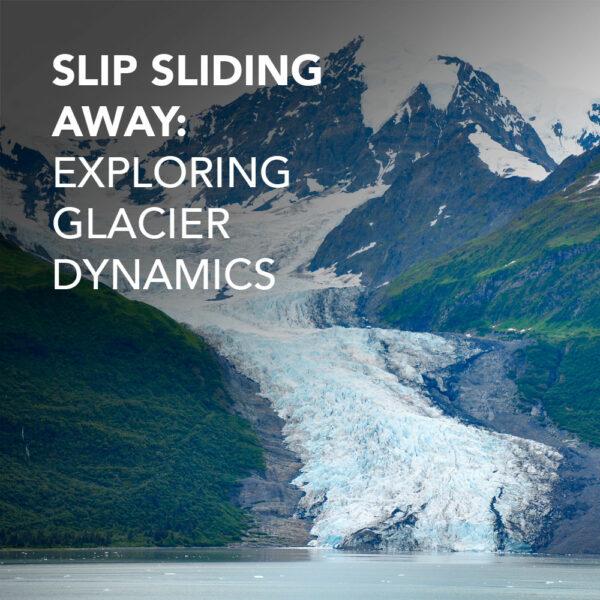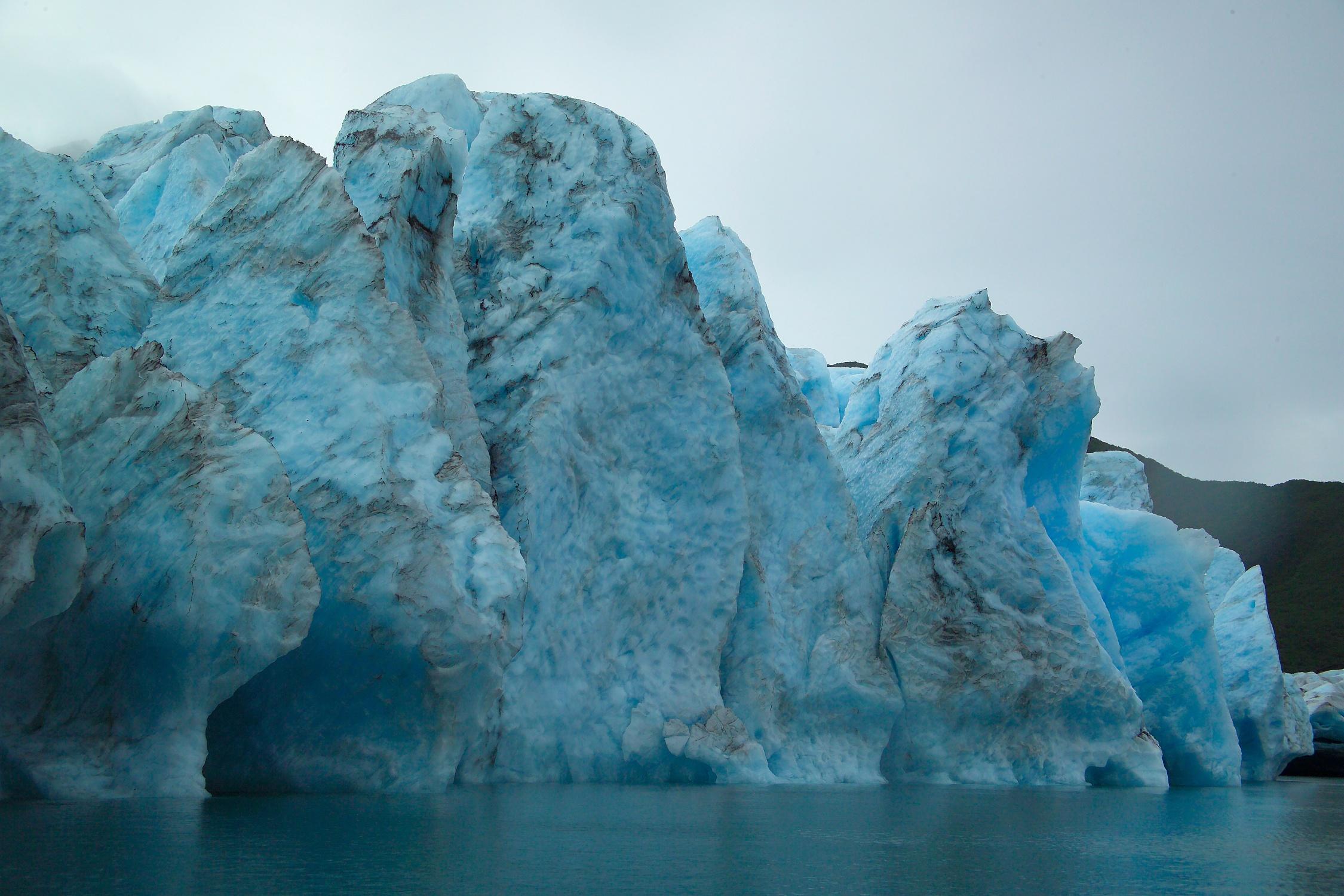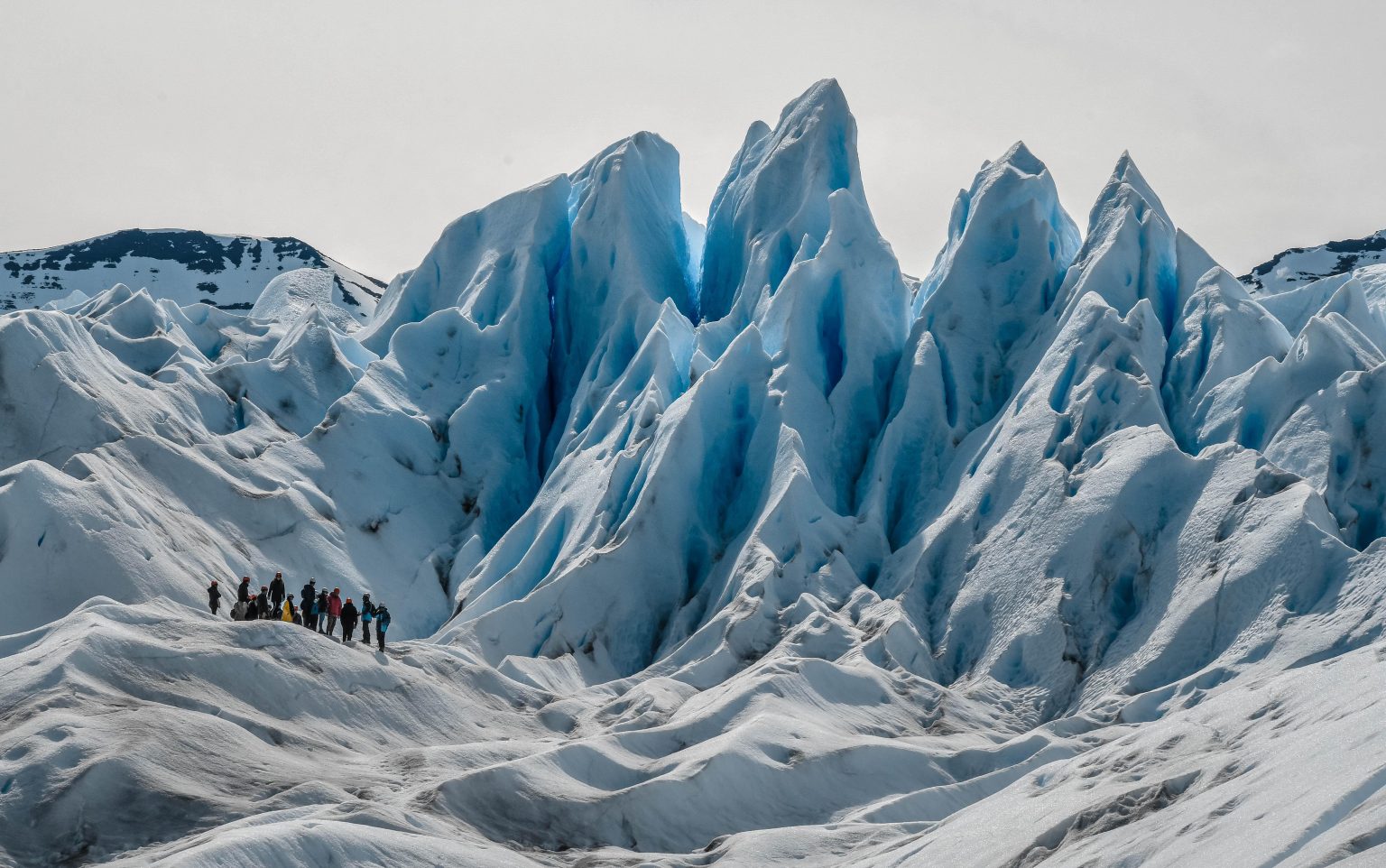As ancient sentinels of time, glaciers embody the serene yet powerful forces that have shaped our planet’s landscape. Tracing their icy fingers across mountains and valleys, they sculpt the earth with an artistry that blends grandeur and subtlety. From the jagged peaks of the Himalayas to the serene expanses of the Arctic tundra, glaciers have played a pivotal role in molding our natural world, leaving behind a dynamic tapestry of features, including U-shaped valleys, fjords, and moraines. This article embarks on a journey through the intricate dance of glacial movement, exploring how these colossal ice masses have not only altered terrain but also influenced ecosystems, human history, and our understanding of climate change. As we delve into the process of glacial carving, we unveil the profound impact of these frozen giants on the very shape of our Earth, revealing a story that is as old as time yet unfolding before our eyes.
Table of Contents
- The Forces of Ice: Understanding Glacier Dynamics
- In the Footsteps of Giants: The Geomorphology of Glacial Landscapes
- Preserving the Past: The Impact of Climate Change on Glacial Regions
- Exploring Glacial Landforms: A Guide for Adventurous Travelers
- In Conclusion
The Forces of Ice: Understanding Glacier Dynamics

Glaciers are mighty forces of nature, slowly but surely reshaping the Earth’s surface over millennia. As they move, they carry with them rocks, sediments, and debris, acting as immense sculptors of the landscape. The dynamics of glaciers are influenced by a variety of factors, including temperature, precipitation, and topography. These icy behemoths can advance and retreat depending on climatic conditions, creating distinct landforms as they carve their path through soil and stone. The process of glacial erosion leads to the formation of features such as U-shaped valleys, hanging valleys, and fjords, which tell tales of their powerful journey through time.
As glaciers flow, their internal structure plays an essential role in shaping the environment. They are often described in terms of their flow dynamics, which can be classified into two main types: internal deformation and basal sliding. Internal deformation occurs when the ice itself deforms under pressure, moving slowly as a viscous material, while basal sliding involves the glacier sliding over its bed due to meltwater lubrication. This dual nature leads to complex interactions between the glacier and the underlying terrain, resulting in various glacial features that enrich our planet’s geography. The movement of glaciers can be succinctly summarized in the table below:
| Dynamic Process | Description |
|---|---|
| Internal Deformation | Ice flows like a viscous fluid under pressure. |
| Basal Sliding | Glacier moves over a liquid or semi-liquid bed due to meltwater. |
| Calving | Breaking off of ice chunks from the glacier’s edge. |
| Melting | Ice mass reduces due to warmer temperatures. |
In the Footsteps of Giants: The Geomorphology of Glacial Landscapes

Glaciers are like nature’s sculptors, reshaping the Earth with their immense weight and mobility. As they advance and retreat over millennia, they create a variety of landforms that tell the story of the planet’s climatic history. The process begins with glacial plucking, where ice captures and pulls away rocks from the landscape. This results in rugged terrain characterized by jagged peaks, deep valleys, and u-shaped troughs. Concurrently, abrasion occurs as glaciers grind over the bedrock beneath them, leaving behind striations and smooth surfaces that reveal the dynamic nature of these ice giants. The interplay of these processes not only influences the local ecology but also shapes human perceptions of natural beauty.
In addition to the visible geographical features, glaciers also affect hydrology and sediment transport in profound ways. When glaciers melt, they contribute to both glacial meltwater rivers and the formation of glacial lakes, which play crucial roles in regional ecosystems. The sediment carried by glaciers, known as glacial till, enriches the soil in downstream areas, making them fertile grounds for agriculture. The following table highlights some of the key landforms created by glaciers:
| Landform | Description |
|---|---|
| Cirque | A bowl-shaped depression formed by glacial erosion on a mountain. |
| Arete | A sharp ridge formed between two adjacent glacial valleys. |
| Hanging Valley | A valley that is suspended above the main valley, often with waterfalls. |
| Moraines | Piles of debris left at the edges of glaciers, forming ridges. |
Preserving the Past: The Impact of Climate Change on Glacial Regions
The glacial regions of our planet serve as both archives and architects of the Earth’s history, shaping landscapes over millennia while preserving clues to past climates. As the world warms, these massive frozen reserves are shrinking, revealing not only the raw features of the land but also the secrets of bygone eras. Glaciers act as natural time capsules, containing air bubbles and deposits that offer insights into historical atmospheric conditions. The environmental shifts currently underway threaten to erase these invaluable records, potentially altering our understanding of climate patterns and triggering unforeseen ecological consequences.
The ramifications of glacial retreat extend beyond the immediate loss of ice, impacting both local ecosystems and global sea levels. As glaciers lose mass, they contribute to rising ocean levels, which can lead to devastating effects on coastal communities. Furthermore, the disruption of freshwater supplies, which many rivers depend on during warmer months, places additional pressure on agriculture and drinking water resources. The interactions between melting glaciers and the communities that depend on them can be summarized in the table below:
| Impact | Consequences |
|---|---|
| Rising Sea Levels | Coastal flooding and erosion |
| Freshwater Supply Reduction | Water scarcity for agriculture and drink |
| Biodiversity Loss | Altered habitats for flora and fauna |
| Cultural Heritage Erosion | Destruction of ancestral lands and historic sites |
Exploring Glacial Landforms: A Guide for Adventurous Travelers
For the adventurous traveler, glacial landscapes offer a mesmerizing tapestry of natural artistry. Glaciers, often referred to as nature’s bulldozers, sculpt the terrain as they drift slowly over time, leaving behind a stunning array of landforms. Among the most captivating features are U-shaped valleys, characterized by their wide, flat bottoms and steep sides. As glaciers advance and retreat, they carve these valleys, creating hauntingly beautiful vistas that attract photographers and hikers alike. Other notable formations include fjords, which are deep, narrow inlets formed by the drowning of U-shaped valleys under rising sea levels, and moraines, which are ridges of debris deposited by glaciers, telling the story of their movement through the landscape.
To truly appreciate these magnificent glacial formations, consider embarking on a journey to some of the most iconic locations around the globe. Here are a few must-visit sites that provide unique glimpses into glacial landforms:
| Location | Key Features | Best Time to Visit |
|---|---|---|
| Yosemite National Park, USA | U-shaped valleys, glacial lakes | Late spring to early fall |
| Skaftafell National Park, Iceland | Glacier tongues, moraines | Summer months |
| Patagonia, Chile | Fjords, ice caps | October to March |
Exploring these frozen realms will not only provide breathtaking views but also serve as a reminder of the power and elegance of nature’s processes. Each glacial landform holds a piece of history, reflecting centuries of climatic evolution and inspiring awe among those who traverse these icy monuments. So, gear up, grab your camera, and prepare to delve into the world of glaciers, where every turn unveils a new masterpiece carved by ice.
In Conclusion
As we conclude our exploration of “,” we are reminded of the profound influence these immense ice giants have on our planet’s topography. From the majestic fjords of Norway to the sweeping valleys of Patagonia, glaciers serve as both sculptors and architects of the Earth, patiently shaping the land over millennia. Their slow but persistent movements etch stories into the very fabric of our environment, revealing the intricate interplay between climate, geology, and time.
As we stand today at the crossroads of climate change, the fate of glaciers hangs in the balance. Their retreat calls for a renewed understanding and respect for these natural wonders, which not only define landscapes but also play a crucial role in our global ecosystem. Recognizing their impact can inspire us to protect these fragile environments for future generations.
In the grand tapestry of Earth’s history, glaciers are but one thread—yet their significance can hardly be overstated. As we gaze upon the breathtaking views they have shaped, let us carry forward the knowledge that these icy titans are not just remnants of the past, but active participants in our evolving world. The landscapes they carve lie beneath our feet, waiting to unveil the secrets of our planet’s dynamic story.



